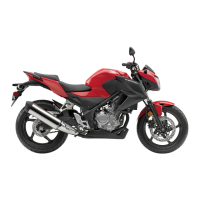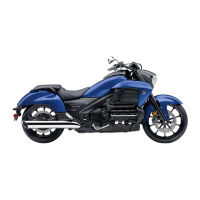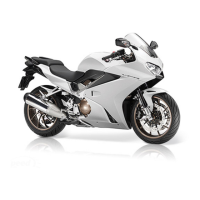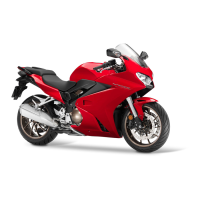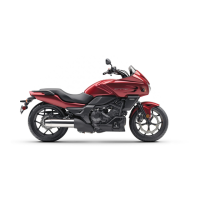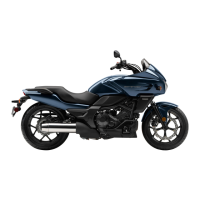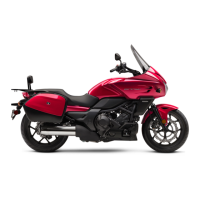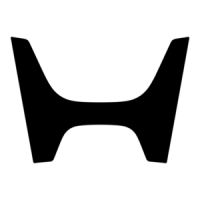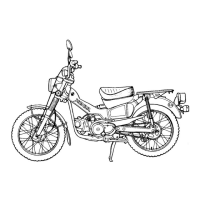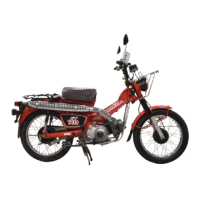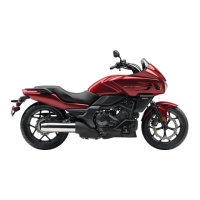
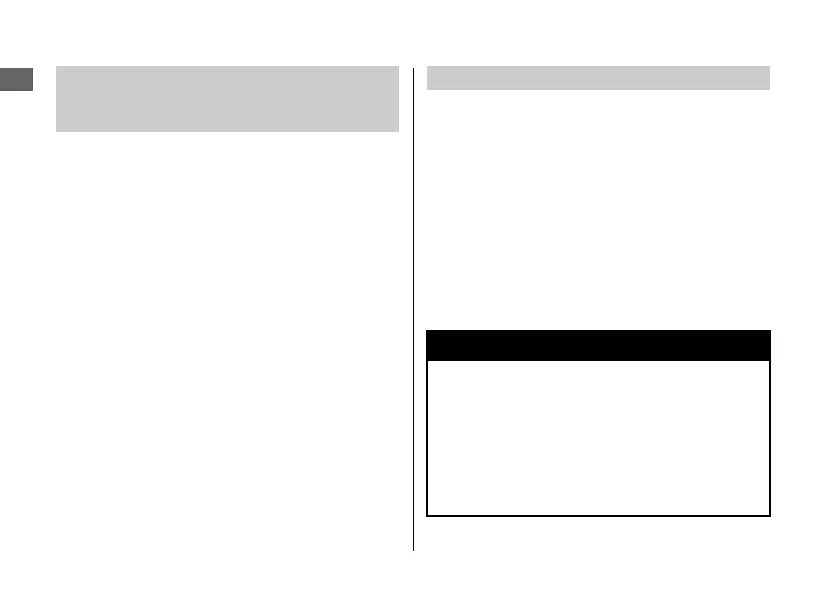 Loading...
Loading...
Do you have a question about the Honda CTX700N 2014 and is the answer not in the manual?
| Engine Type | 670cc liquid-cooled parallel-twin |
|---|---|
| Bore x Stroke | 73.0mm x 80.0mm |
| Compression Ratio | 10.7:1 |
| Induction | PGM-FI with 36mm throttle body |
| Ignition | Digital transistorized with electronic advance |
| Transmission | Six-speed |
| Final Drive | Chain |
| Front Brake | Single 320mm disc with two-piston caliper |
| Rear Brake | Single 240mm disc with single-piston caliper |
| Front Tire | 120/70-17 |
| Rear Tire | 160/60-17 |
| Seat Height | 28.3 inches |
| Fuel Capacity | 3.17 gallons |
| Curb Weight | 478 pounds |
| Front Suspension | 41mm fork; 4.3 inches travel |
| Rear Suspension | Pro-Link single shock, 4.3 inches travel |
| Trail | 4.3 inches |
Guidelines to enhance rider safety by following procedures and precautions.
Labels on the motorcycle provide safety information and warn of potential hazards.
Precautions for safe riding, including protective apparel and riding behavior.
Precautions for riding, including break-in period, brakes, and tire conditions.
Advice against adding unauthorized accessories or making modifications that compromise safety.
Guidelines for carrying weight, ensuring secure and balanced luggage to maintain stability.
Illustrates and labels key parts of the motorcycle for identification.
Explains the function and display of the motorcycle's instrument panel.
Details the location and function of various switches on the handlebars and dashboard.
Step-by-step procedure for starting the motorcycle engine safely and correctly.
Explains the gear shifting pattern, recommended shift points, and transmission modes.
Instructions on how to open the fuel filler cap and refuel the motorcycle safely.
Information on using the luggage box, tool kit, and helmet holder.
Explains why regular maintenance is essential for safety, performance, and longevity.
Details the recommended maintenance intervals for various motorcycle components.
Provides essential information and procedures for performing basic maintenance tasks.
Guidelines on using genuine parts and ensuring their proper installation.
Information on battery maintenance, cleaning, and charging procedures.
How to inspect and replace fuses to troubleshoot electrical issues.
Covers selecting, checking, and changing engine oil and filter.
Information on checking and using the correct brake fluid.
How to inspect, adjust, and lubricate the drive chain.
Procedures for checking and adding coolant to the cooling system.
Covers checking brake fluid and inspecting brake pads.
How to check the side stand operation and its safety function.
Checking and adjusting clutch lever freeplay.
How to check and adjust throttle freeplay for smooth operation.
Adjusting headlight aim and brake light switch.
Explains the meaning and actions for various warning indicators on the dashboard.
Troubleshooting steps for a blinking indicator related to the transmission system.
Addresses issues like fuel gauge failure indications.
Guidance on emergency tire repair and wheel removal procedures.
Troubleshooting common electrical issues like battery problems and burned-out bulbs.
Instructions for identifying and replacing blown fuses in the fuse box and main fuse.
Details about the odometer, tripmeter, document bag, and ignition cut-off system.
Guidelines for washing, polishing, and maintaining the motorcycle's appearance.
Procedures for storing the motorcycle for extended periods and transporting it.
Advice on using environmentally friendly cleaners and recycling wastes.
Location and importance of VIN and engine serial numbers for registration and parts.
Explanation of exhaust, fuel, and noise emission control systems and their importance.
Information on the catalytic converter and how to protect it.
Guidance on using oxygenated fuels and potential issues.
Information on obtaining service and owner's manuals for the motorcycle.
Details on warranty coverage, responsibilities, and extending coverage.
Contact information for Honda service, parts, and customer support.
How to report safety defects to NHTSA and American Honda Motor Co.
Key specifications of the motorcycle, including dimensions, weight, and engine details.
Technical data related to tires, spark plugs, fluids, and engine oil capacities.
Important torque values for various motorcycle components and fasteners.
Specifications for headlight, brake/tail lights, and turn signal bulbs.
Specifications for main and other fuses used in the motorcycle.
